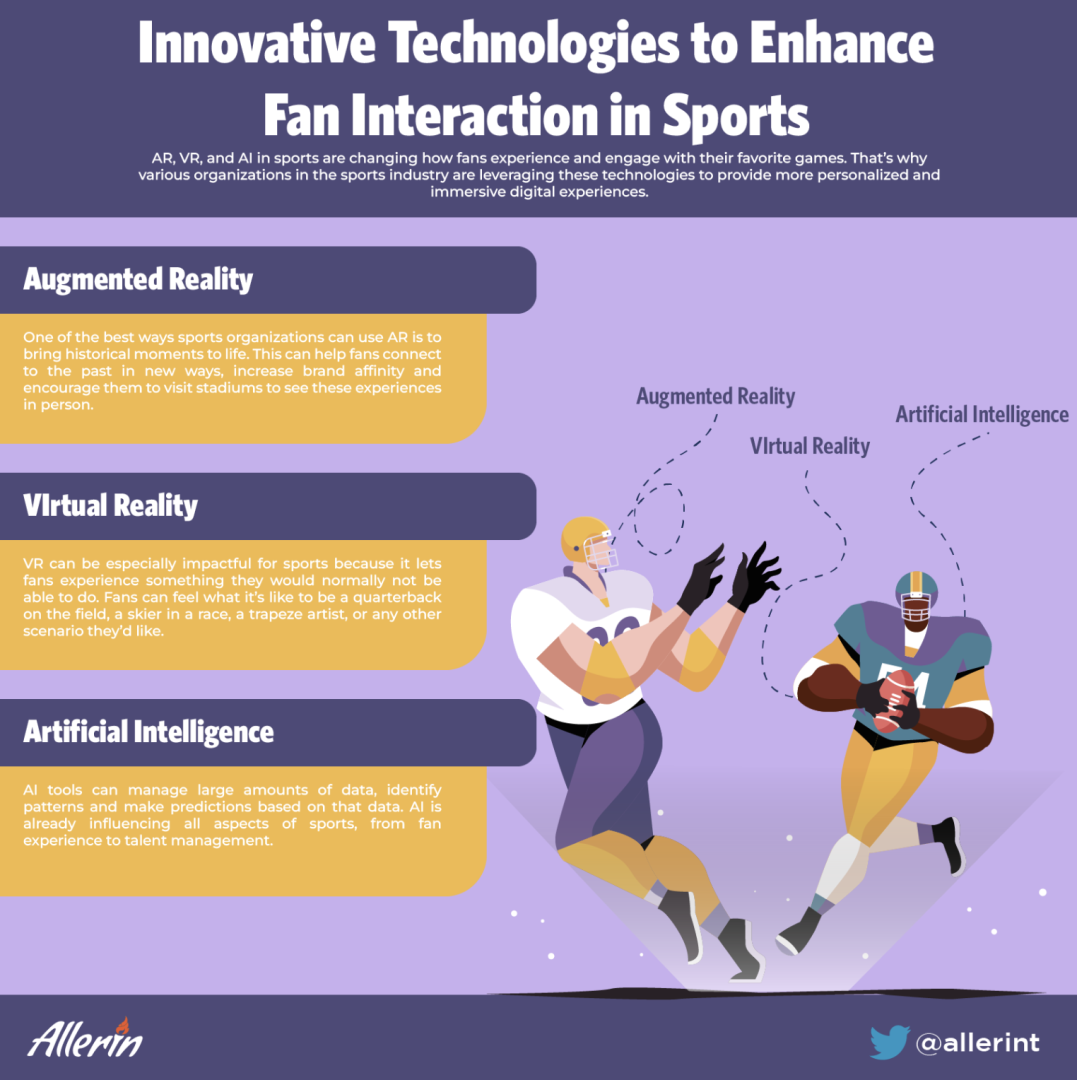VIRTUAL REALITY IN SPORTS
VR is a computer-generated simulation of an artificial environment that lets you interact with that environment. You experience VR by wearing a headset that transports you to a computer-generated environment and lets you see, hear, smell, taste, and touch it as if you were actually there. VR can be especially impactful for sports because it lets fans experience something they would normally not be able to do. Fans can feel what it’s like to be a quarterback on the field, a skier in a race, a trapeze artist, or any other scenario they’d like. The VR experience is fully immersive, and the user is able to interact with the content using hand-held controllers. This enables users to move around and explore their virtual environment as if they were actually present in it.
ARTIFICIAL INTELLIGENCE IN SPORTS
Artificial intelligence is machine intelligence implemented in software or hardware and designed to complete tasks that humans usually do. AI tools can manage large amounts of data, identify patterns and make predictions based on that data. AI is already influencing all aspects of sports, from fan experience to talent management. Organizations are using AI to power better digital experiences for fans. They’re also using it to collect and analyze data about fan behavior and preferences, which helps organizers better understand what their customers want. AI is also changing the game on the field, with organizations using it to make better decisions in real time, improve training and manage player health. Much of this AI is powered by machine learning, which is a type of AI that uses data to train computer systems to learn without being programmed. Machine learning is the reason why AI is able to evolve and get better over time — it allows AI systems to adjust and improve based on new data.
MERGING THE REAL AND VIRTUAL
VR and AR are both incredible technologies that offer unique benefits. VR, for example, is an immersive experience that allows you to fully imagine and explore another virtual space. AR, on the other hand, is a technology that allows you to see and interact with the real world while also being able to see digital content superimposed on top of it. VR and AR are both rapidly evolving and can have a significant impact on sports marketing. By using both technologies, brands and sporting organizations can create experiences that bridge the real and virtual. This can help sports marketers create more engaging experiences that truly immerse their customers in the game.
Technologies like AR, VR and AI in sports are making it possible for fans to enjoy their favorite games in entirely new ways. AR, for example, can help sports lovers experience historical moments, VR lets them immerse themselves in the game, and AI brings them more personalized and immersive digital experiences. The best part is that sports fans can also use these technologies to interact with one another and feel even more connected.


































You must be logged in to post a comment Login